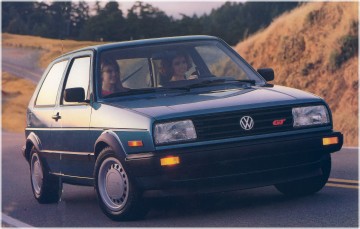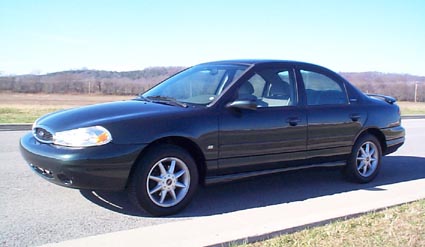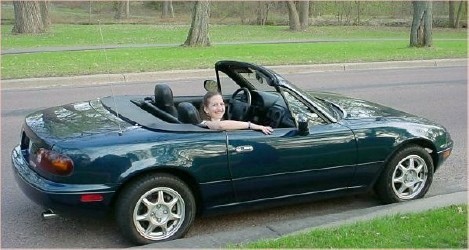Decisions, Decisions ...
The decison to convert a car to an EV did not come easily. I spent a couple of months trying to answer the many questions that arose. The more I researched the subject the more questions I had. Can I drive 13 miles each way to work and run an errand or two on an overnight charge? Will the decrease in range on a frigid winter day leave me stranded half-way home? What batteries will provide the range without overloading the car? Can I carry myself, three kids and the dog when I run across town for my daughter's after-school activities? Do I really want to spend several months in the garage figuring out and implementing the design details?
But in the end it comes down to the basic question whether I can create a reliable vehicle with enough range to commute back and forth to work. And to be able to do it for a cost (both time and money) that I can afford. I guess that the answer that I arrived at is "yes" because I've now taken the plunge.
Sources of EV Information
My research on the topic has mostly been through the internet, and there are lots of good resources out there. Here's a page with lots of Links to EV resources.
Another excellent resource if you're serious about converting is the EV Discussion List. This is a group of over 1,000 people around the US and the world who have an interest in EVs. Many of them are quite experienced and willing to give advice. There's an archive with a long collection of past postings that should be searched before asking "newbie" questions of the whole group.
I also have the benefit of a local chapter of the Electric Auto Association (EAAEV). This is a group of people in Minnesota with an interest in Electric Vehicles and other alternative transportation. You can see the website for the local chapter at MN EEAEV
Once I decided to go ahead with the project I had many more decisions to make. So I looked at what other EV converters had written about their experience, starting in the EV Album, and realized that there's no set formula. People have converted everything from a Razor scooter to a 4WD Jeep Cherokee to a DeLorean sportscar! Unless you have the exact same needs and taste in cars as another converter had, you're starting down the path of a custom conversion. Perhaps this is what intrigued me the most.
Criteria For My EV
So I began by writing down a list of my criteria for an Electric Vehicle. Here they are in somewhat priority order:
- Range that allows for my daily commute plus a few extra miles for errands. (Greater than 35 miles at 40 MPH, even in winter)
- Use of an American donor car
- A car with a manual transmission (a manual provides greater range, and I don't know how to drive an automatic:-)
- Maximize the life of the batteries, which is the largest ongoing expense with an EV.
- Ease of use (A vehicle that anyone can drive, with self-management of battery charging)
- All components extendable to higher range and performance with replacement of batteries (when better technology becomes available)
- Use parts that are "Made in USA" where possible (Easier to deal with the suppliers if there's a problem.)
- A design that prioritizes higher range over faster acceleration.
- Quiet operation
- Keep the weight down - the finished EV must remain below the GVWR (Gross Vehicle Weight Rating)
- Top speed of at least 65 MPH
- Minimize initial cost of battery pack
- Total conversion project cost less than $10,000 (not counting donor car)
- Include heater and defroster for comfort through the Minnesota winter.
- Flexible battery layout (not size specific) to allow an upgrade to different batteries at a later date.
- Suspension modified to compensate for additional weight of the batteries.
- Brakes must operate as before conversion using a quiet vacuum pump.
Choosing a Donor Car
Based on these criteria I started researching what donor car to use. One place that I've looked for previous cars is the Car and Driver magazine Ten Best list. The magazine editors annually evaluate many cars and pick their "Ten Best" based on how well they drive and other criteria. It turns out that my past three cars have all been on the Ten Best list multiple years. (Volkswagen Golf GT - similar to a GTI, Ford Contour SE, and Mazda Miata)
I must agree with the Car and Driver editors that each of is a great driver's car.



In addition to drivability, my EV donor car needed to be fairly small for efficiency, yet be able to take the weight of a lot of batteries. From these criteria I decided on a Ford Focus sedan. Several years on the Ten Best list; an efficient lightweight car; built in the USA; and a fairly large weight margin for adding batteries.
My next step was to find a Ford Focus with a manual transmission. It turns out not many of these exist in a sedan - most manuals are in hatchbacks. I didn't really want a hatchback for reasons I explain in the FocusEV FAQ, so I bought a 2001 sedan. Once I had the car I needed to decide on the electric motor and the controller (the device that steps down the battery voltage to a lower value to drive the motor). These two components, along with the battery pack, are the largest factors in determining perfromance and range of the finished EV. There are also lots of little details like the type of battery charger, what control and safety features to include, etc. I'm still pondering some of these decisions.
Updated 8MAY2008 CHS